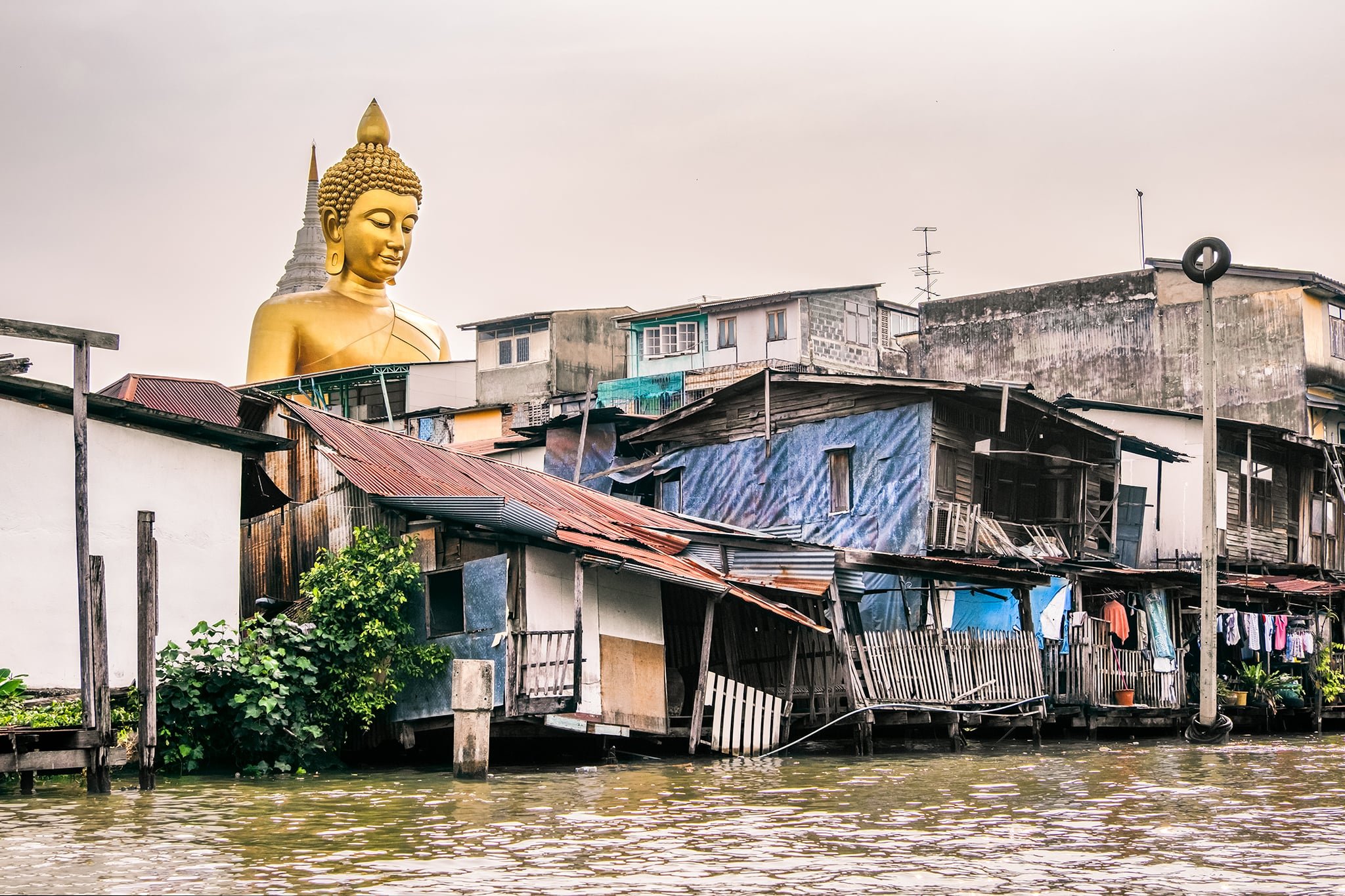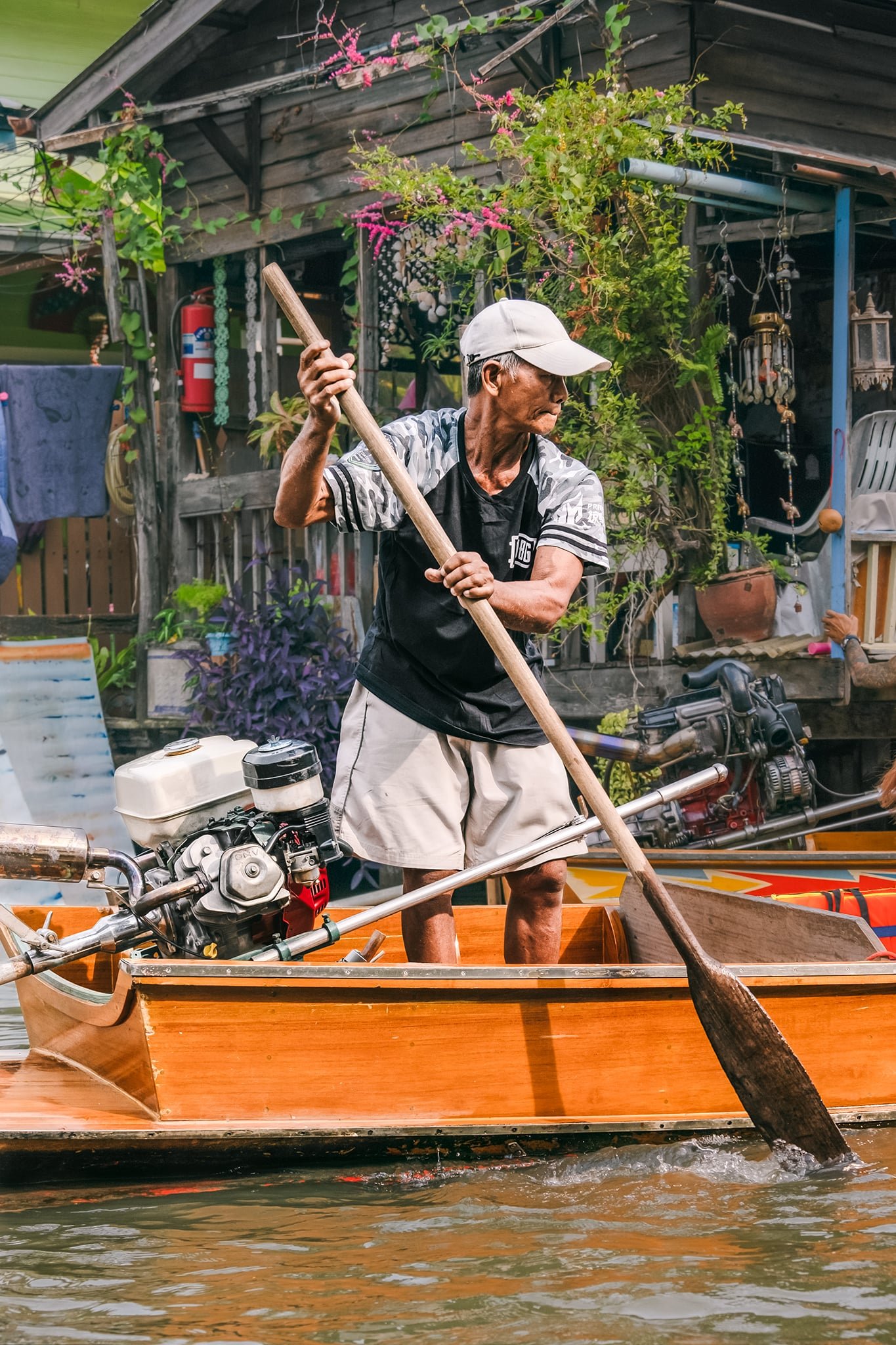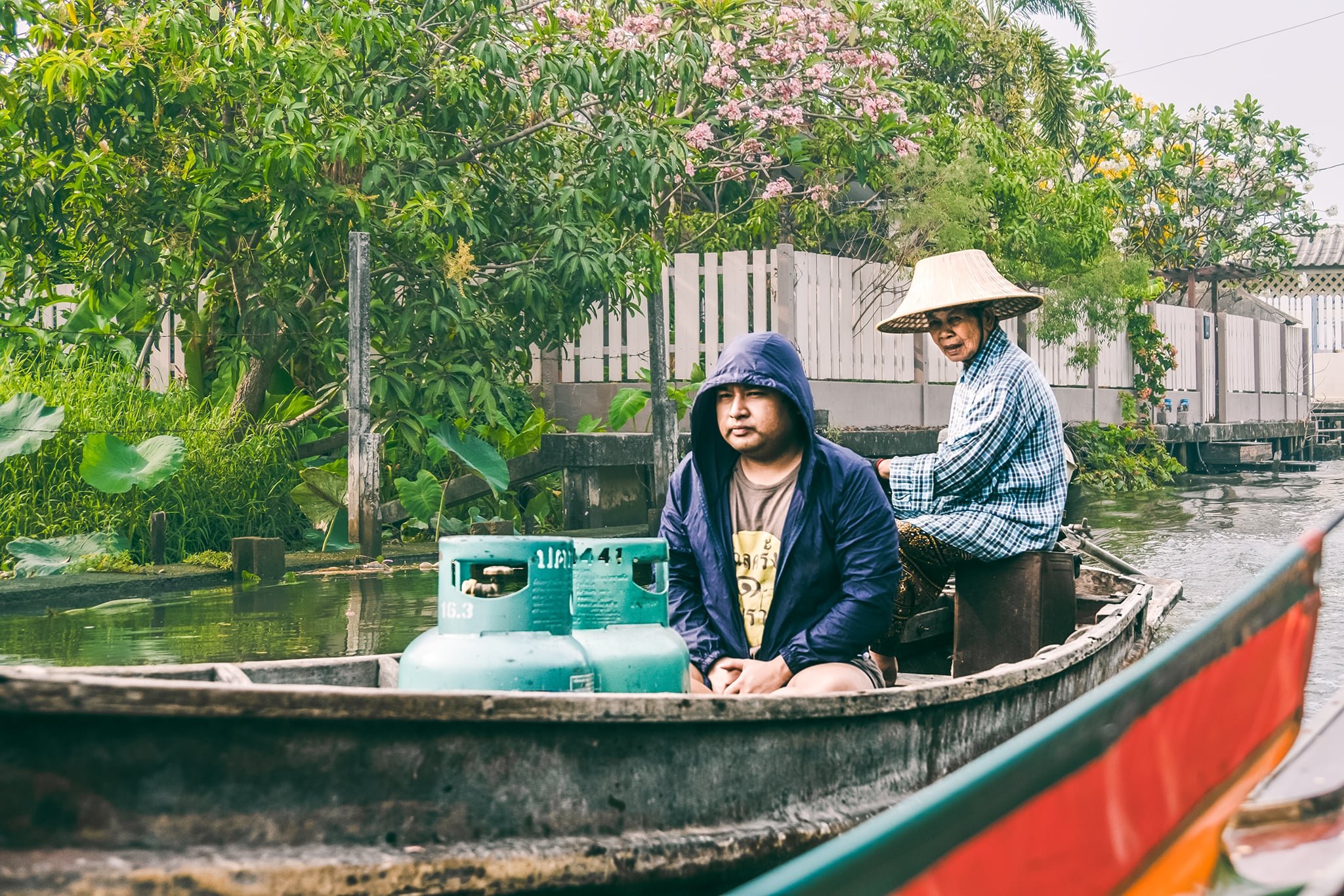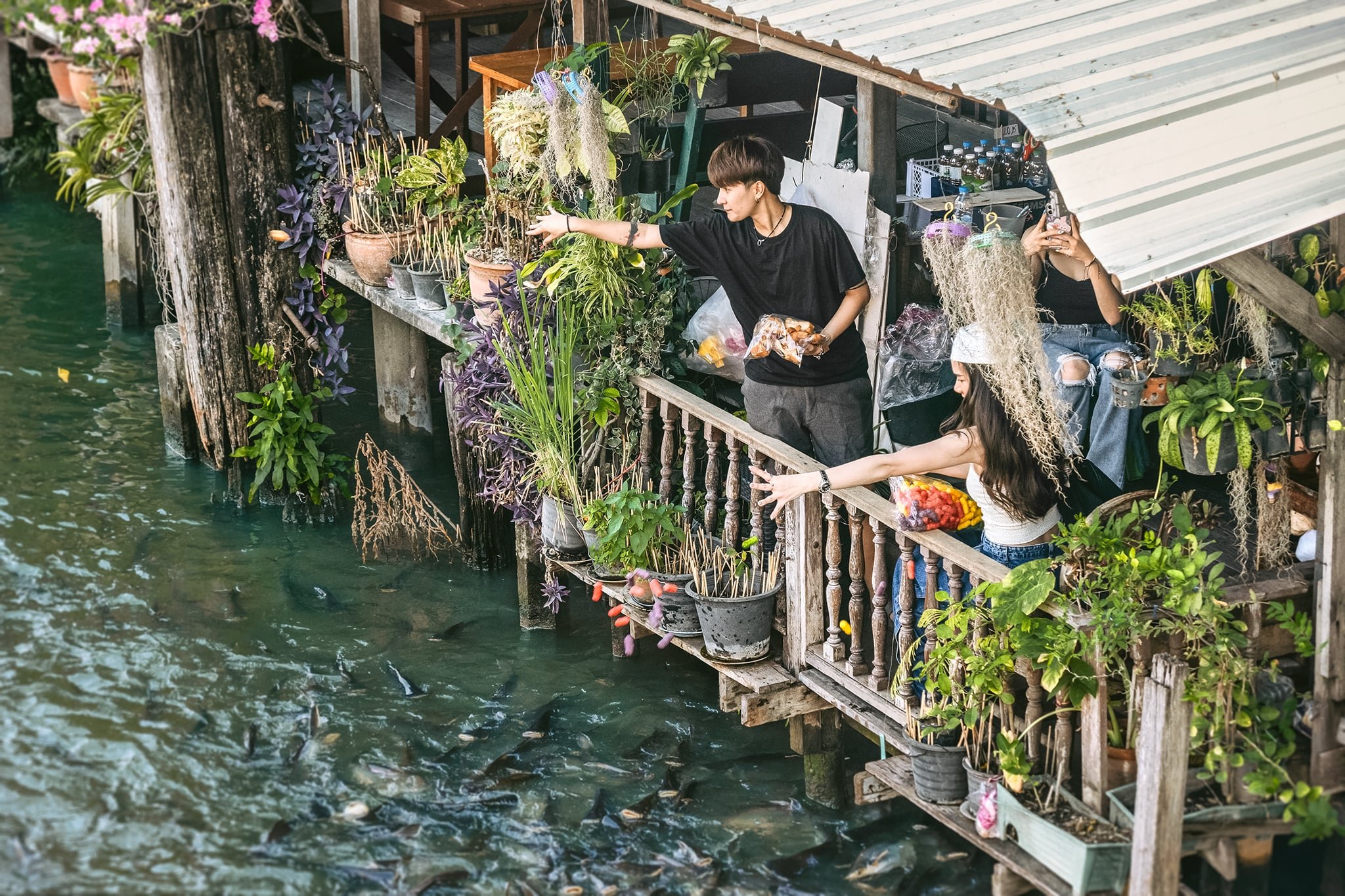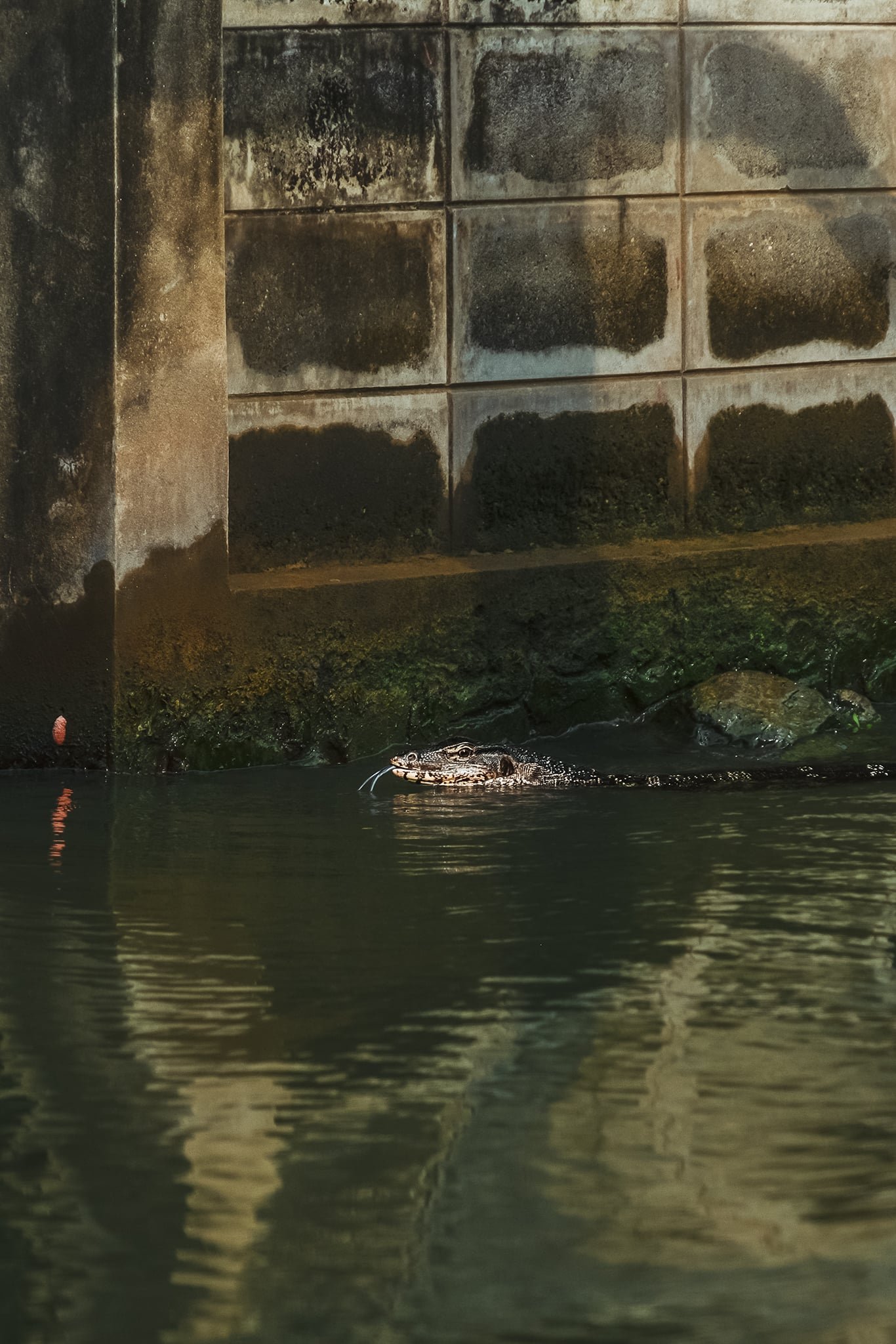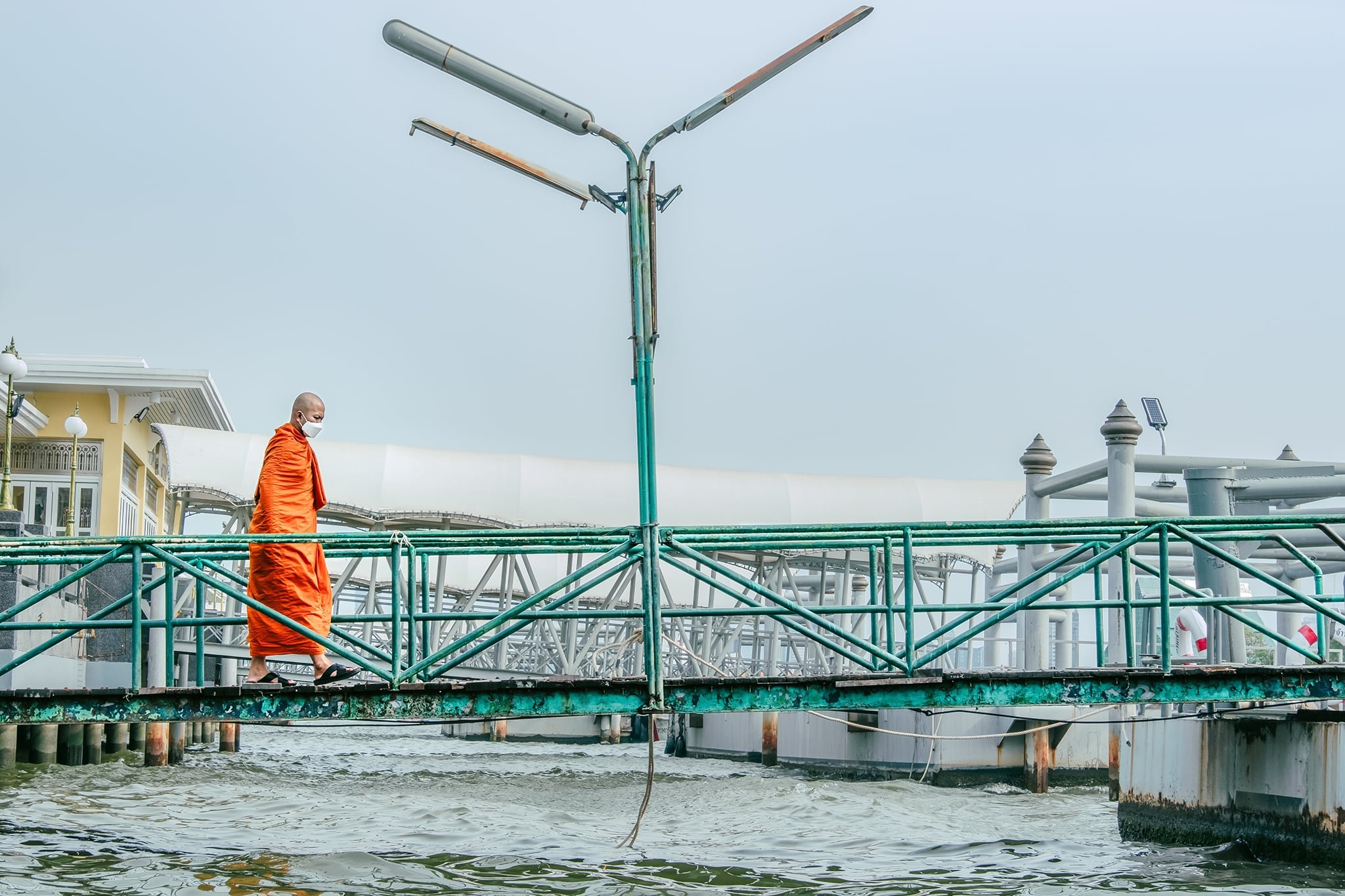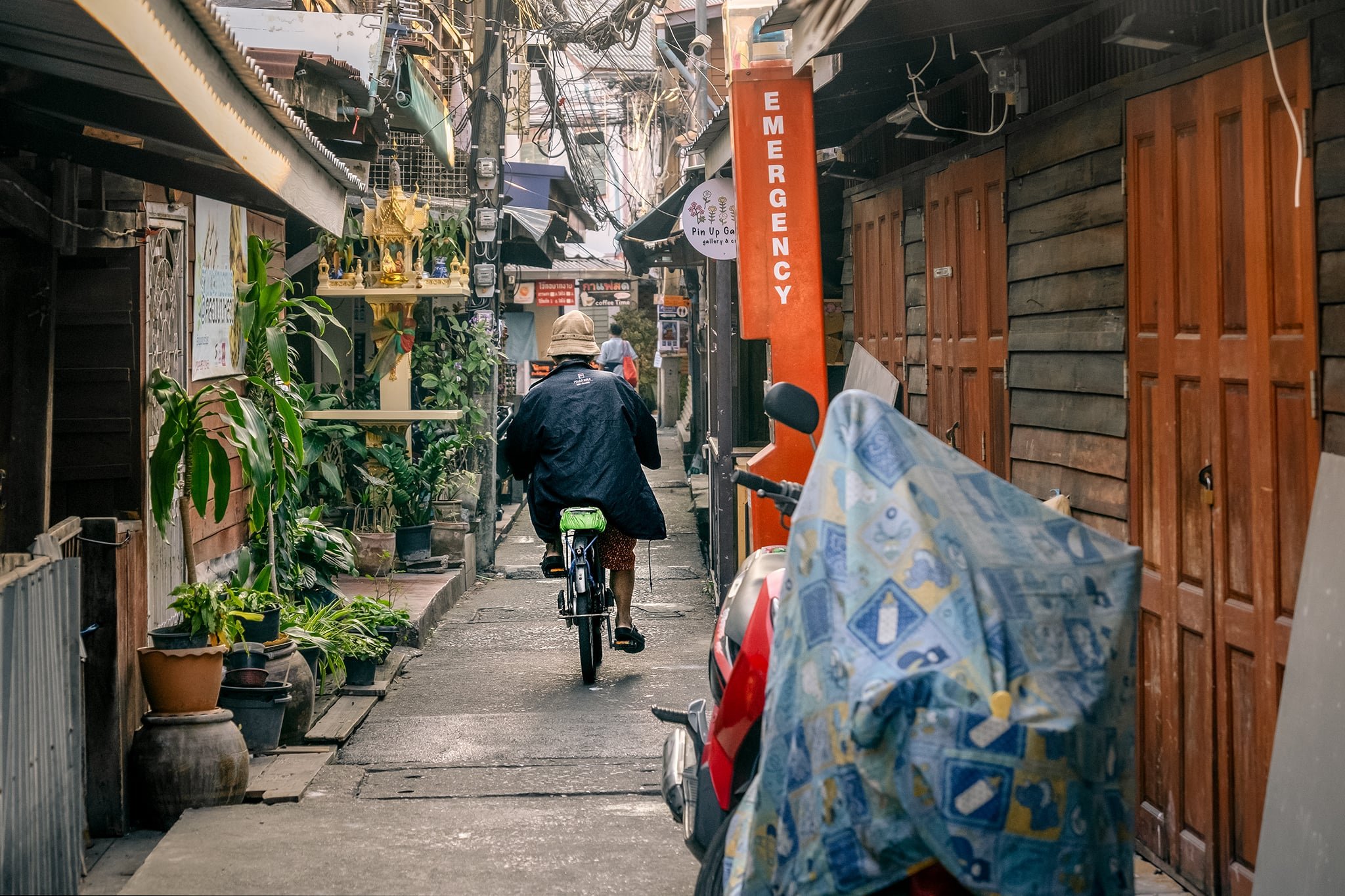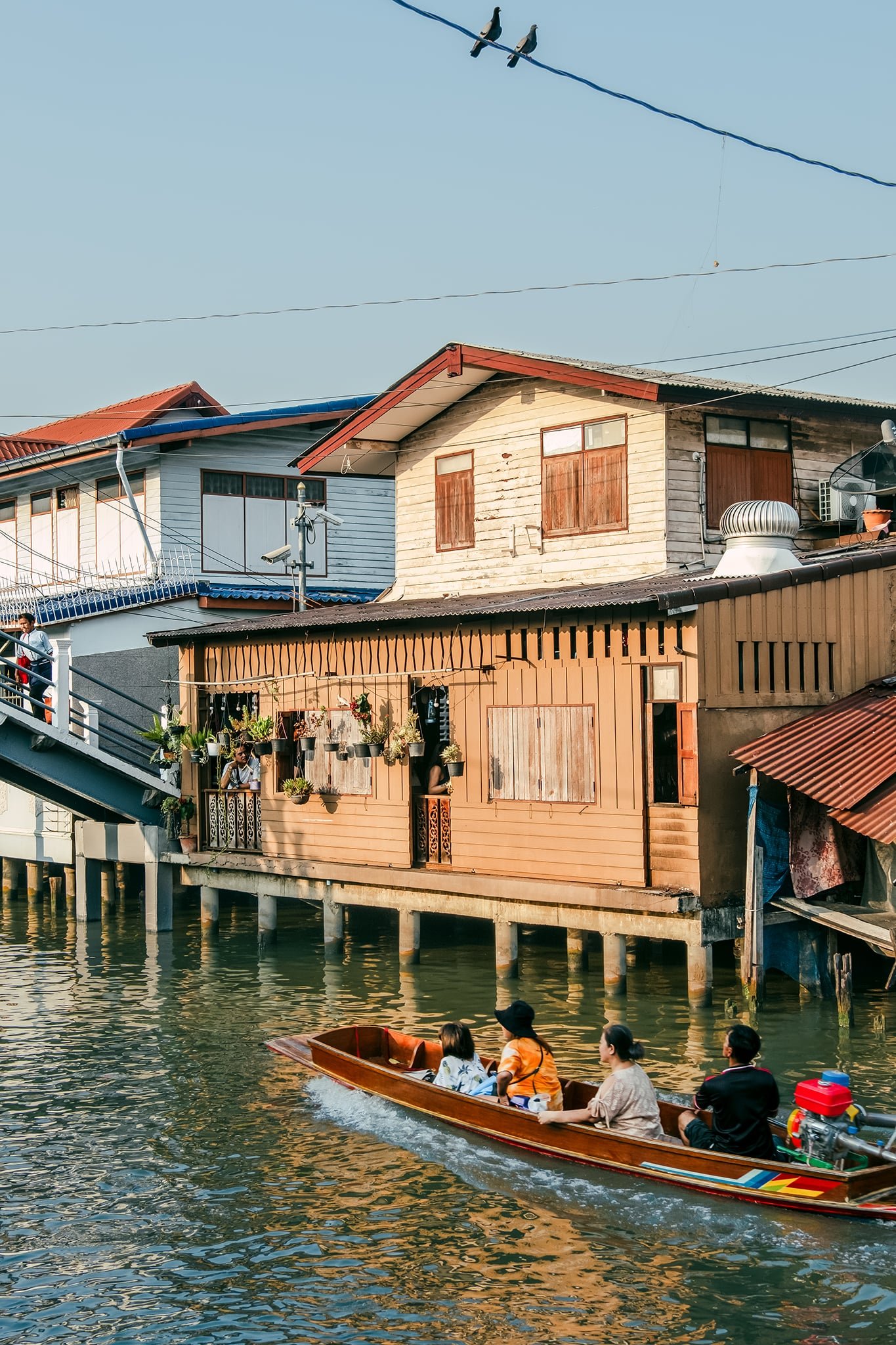Bangkok: Life Along the Waterways
The photo series Bangkok: Life Along the Waterways reflects on the spring of 2024, when I encountered a striking visual reality. Life along Bangkok’s canals impacted me so profoundly that my earlier journey through Thailand’s tourist areas faded in comparison.
Created through spontaneous observation and a street photography approach, the series offers an authentic, vibrant depiction of everyday life along the waterways.
The project is currently traveling as an exhibition through Estonian libraries (October 2024 – December 2026), accompanied by artist talks, and was published in the autumn 2024 issue of Positiiv magazine.
A colorful boat rushes noisily through the stagnant canal water.
Shortly after arriving in Bangkok, we let ourselves be convinced by a random boatman. Soon, my attention is drawn to the life unfolding along the canals, where wealth and poverty exist side by side.
Near the gleaming temple structures, dilapidated huts cling to the banks, as if waiting for the fateful wake of a passing river taxi to pull them into the canal. Yet life along the waterways remains dynamic and inviting.
The Wat Paknam Phasi Charoen temple, founded in 1610, is home to a recently completed giant Buddha statue in a lotus position, towering as high as a 20-story building. Against the backdrop of the Buddha's brilliance, visible from all around, the everyday simplicity of the huts along the klongs appears even more modest. However, this contrast can also emphasize the presence of beauty and spirituality in daily life, offering hope and strength even in the most humble living conditions.
The people living along Bangkok's canals are often involved in traditional crafts such as boat building, woodworking, fishing, and selling handmade goods to tourists. Floating markets operate in many places. Many foreign visitors enjoy boat rides on the canals to discover hidden corners of the metropolis, which contrast with the modern urban landscape.
The terraces of the houses offer glimpses into everyday domestic life. Here, one can see simple activities such as cooking, laundry, and taking care of little ones, as well as neighbors deep in conversation. Children play by the water's edge, while cafe workers and visitors feed fish with colorful corn sticks, creating a lively and cheerful atmosphere.
Canals are not just for humans. Monitor lizards can be found both in wetlands and on land, as well as in urban environments around trash bins and streets searching for food. Generally, these large, patterned creatures are neither feared nor avoided.
The presence of Buddhist monks in public spaces is a regular part of Bangkok's daily cityscape, offering a calm counterbalance to the city's hustle and noise.
Most of the temples along the canals are open to everyone and provide the opportunity to experience Buddhist ceremonies. The atmosphere is friendly, and there's no reason to feel awkward, as more experienced participants are quick to offer guidance. These temples also serve as Buddhist learning centers, attracting hundreds of monks from around the world. Monks are highly respected in society. For instance, in public transport, they are offered seats, just like pregnant women, people with disabilities, and the elderly.
Along the Chao Phraya River, from which numerous canals branch out, stands one of Bangkok's most prominent temples, Wat Arun, also known as the Temple of Dawn. Adorned with porcelain shards, the temple attracts visitors from all corners of the world and various religions, many dressed in traditional attire.
Finding peace and a spiritual experience in this hustle and bustle may not be easy, but one can challenge themselves by climbing the temple's steep staircase.
Local art and culture converge in a riverside community known as Baan Silapin, Klong Bang Luang, or the Artist's House. This long building, constructed in traditional Thai style, serves as a meeting place for artists who create and share their work right by the river, and anyone can join them to partake in art exhibitions, workshops, and puppet shows. The space is adorned with traditional paintings, masks, puppets, and sculptures depicting men in white, red, and black. In addition to the work of local artists, visitors can purchase art supplies and let their own creativity take flight in this creaky wooden house.
The streets with houses on the banks are narrow, dim, and full of activity and trading, with scooters and bicycles weaving through. As the sun begins to set, the daytime hustle and bustle fades. The golden hour's glow shimmers warmly on the water's surface, and the crowd on the shore begins to thin out.
It's time to catch a tuk-tuk. While the metro allows for fast travel across long distances without traffic jams, much of the real-life experience, with its patterns and colors, remains unseen underground. Friendly drivers might take it upon themselves to rearrange your plans and transport you directly to tourist traps, but these detours are still worth it because traveling by tuk-tuk takes you through authentic Bangkok. And if you happen to get lost, it's not a big deal since modern communication tools make it straightforward to navigate even in this city.


